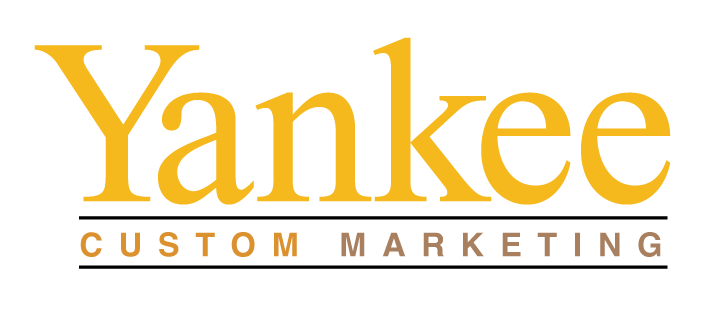How print media can build connection beyond the screen
Your brand can harness the benefit of a digital detox by providing valuable content through print magazines as your customers decide to start the year with less screen time.
Many people are targeting their chronic online habits as a New Year’s resolution. Americans spend more than 7 hours per day staring at screens on average.
Social media app algorithms grab your attention and keep you scrolling. But all that scrolling comes at a cost. The National Heart, Blood, and Lung Institute defines excessive screen time as more than two hours a day, outside of work hours.
“Excessive smartphone use may increase the risk of cognitive, behavioral, and emotional disorders in adolescents and young adults that also has the potential to increase the risk of early onset dementia in late adulthood,” according to an article in the Internal Journal of Mental Health and Addiction.
As people work on reducing screen time, they may turn toward more analog forms of information and entertainment. Magazine readership is on the rise. Brands would do well to make sure they are investing in capturing that attention. Print media is a valuable format to engage your audience in a way that is useful to them while helping them achieve a new year with healthier screen habits.
Allure of analog: Print media provides a focused narrative
How many times have you been on your phone, perhaps reading an article or watching a video, when a notification pops up distracting you and maybe even pulling you away?
A University of Michigan Health and Common Sense study shows teens get an average of 240 phone notifications daily. That number is a bit lower in adults, with estimates of about 75 to 140 average notifications.
Consumers are overwhelmed by the noise of digital advertising. A Media Post survey shows that 61% of consumers are sick of digital ads on social media. That’s why so many are reducing screen time with a digital detox.
Analog media like magazines have no such problem. While you might get someone’s attention for a few seconds with a social media post, you’re likely to get minutes or more with a magazine. People tend to flip through all the pages of a magazine, even if they aren’t reading all the stories.
Print media feels calm and thoughtful. Readers recognize the effort that goes into magazine production, resulting in content deemed trustworthy.
The benefits of print publishing include establishing yourself as a thought leader.
Since magazines typically target a niche interest or audience, you’ll know that your message is being read by people who actually care about it. You can also target the distribution of your publication getting it into the hands of the people you want instead of trusting it to the online abyss.
Another benefit of print magazines over social media is their ability to be a reference material. On social media, you may see an interesting post, but if you don’t bookmark it or engage with it at that moment, it gets buried and can be a challenge to relocate again. A reader can set down a magazine to return to it later without losing their place.
Healthy swap: Print media benefits that digital doesn’t have
The blue light from screens has been shown to interfere with melatonin production, a hormone that regulates sleep. People who have a lot of screen time can find it more challenging to fall asleep.
Alternatively, research suggests that people who read before bed generally sleep better, wake less often, and sleep longer.
Those phone notifications mentioned earlier, in addition to being distracting, contribute to increased levels of stress. There’s a pressure to respond to every beep immediately. Much of the time, those notifications aren’t urgent at all. Consumers able to step away from their device or put it on “do not disturb” may find they feel less stressed.
Alternatively, reading for pleasure reduces stress.
“Reading can even relax your body by lowering your heart rate and easing the tension in your muscles. A 2009 study at the University of Sussex found that reading can reduce stress by up to 68%.”
And while the internet offers opportunities to connect with people across the entire world, excessive screen time use often leaves users feeling more isolated and depressed.
People who use screens for more than 4 hours a day are at increased risk for developing depression.
Hobby magazines exist for just about every interest imaginable. If launching your own print magazine is not possible for your company yet, finding a publication to which you can submit content can help you build connections. If you do have an unrepresented niche, launching a magazine can be a way to for a community for that topic, just as New Hampshire Magazine did by launching Run NH in 2024.
The timeless appeal of print
As TikTok continues to operate on borrowed time in the United States, there’s lots of chatter about what will happen next. X/Twitter had 200 million before it went public in 2013. It peaked at 368 million in 2022 and is now down to 335 million users. Before those, there was MySpace, Vine and others that saw rises and falls of popularity.
In the ever-changing online realm, platforms come and go. The brands who use them are just renting their space on the sites. While brands can find a new audience on these various platforms, they are subject to the terms and aesthetics of the social media company.
Meanwhile, brands tap into print media benefits have a consistent method of delivering their stories, while maintaining ownership of their intellectual property. You can create a visual experience that speaks to your brand story. You are not subject to the whims and updates of a social media host.
Even e-commerce behemoth Amazon takes advantage of the value of a print magazine with an annual holiday toy catalog, which it launched in 2018. As brick-and-mortar toy stores become harder to find, the catalog is Amazon’s way to have a physical presence in the lives of consumers with kids.
“The catalog is a market share play,” said Steve Pasierb, CEO of The Toy Association, in 2018 to Wired. “Amazon has a huge chance to win a lot of those holiday sales.”
The catalog has become a must-have item for households with children with some parents seeking out additional copies so each child can have one. With stickers, puzzles and games, the catalog encourages engagement, becoming an object of entertainment and not only advertising.
Books, magazines and pamphlets have been around for centuries. They are timeless and convenient ways to share your message. Readers don’t need to learn new ways to post, vlog, snap, or tweet to engage. More than 90% of U.S. adults read magazines.
As we enter a new year, one that’s particularly uncertain in the digital media realm, print magazines offer reliable connection. Cut through the noise and let the experts at Yankee Custom Marketing help tell your story through a magazine publication. Then, contact Cummings Printing to bring your product to life with high-end finishes.

